You’ve probably seen the ads where a local shelter proudly proclaims to be “The only no-kill shelter in your city,”. Hurrah, right? You don’t want shelters putting down our furry friends.
When donating your time, your money, or looking for your next pet, you should turn to that no-kill shelter, right?
Unfortunately, the situation isn’t that simple. The world of animal sheltering is complicated and nuanced. Like all too many things today, it’s also incredibly polarized.
In this article we’ll be looking at the ins and outs of kill vs no-kill shelters, and will explore whether or not no-kill shelters are all they’re cracked up to be.
A Bit About the Author
Full disclosure: I spent two years working at one of the largest open-admission animal shelter in the U.S. We handled roughly 20,000 dogs, cats, and horses every year. That shelter was not a no-kill shelter. They would euthanize animals that were dangerous to the community or suffering physically.
However, that wasn’t my only experience working at a shelter. Initially, as a brand-new dog trainer, I apprenticed at a no-kill rescue that rehabilitated and retrained behaviorally challenging dogs at All Breed Rescue and Training in Colorado Springs.
At this shelter, we also worked to pull dogs out of other overworked shelters that regularly euthanized healthy, friendly animals because of space and time constraints. I’ve also been involved in shutting down no-kill rescues that had turned into hoarding cases.
In other words, I’ve been hands-on with rescues and shelters on both ends of the spectrum, and I’ve seen how both operation models can go terribly wrong.
I think that most reasonable people will agree with my basic philosophy in regards to animal shelters: animal shelters work better when they work together, and animal shelters have a duty to balance the needs of their community with the needs of their animals.
At times, euthanizing a sick, injured, highly aggressive, or highly anxious animal is the kindest, safest, and most responsible thing to do.
Open Admissions (Kill) vs Limited Admission (No-Kill) Shelters: The Ins and Outs
All too often, the no-kill movement focuses on “the outs” of animal shelters. It’s a numbers game, with all eyes turned to how the dog leaves the shelter. Dead or alive, that’s all that matters.
That’s not true – which animals end up in the shelter (the ins) matter, too. Broadly speaking, animal shelters fall into two categories on the intake side:
Open Admission
Open admission shelters or rescues take in any (and every) dog that shows up at their door. They often (but not always) have night kennels, where anyone can leave a dog in the dead of the night if they’re too embarrassed to surrender their dog during operating hours, find a stray dog, or miss the opening hours of the shelter.
Because of their commitment to never turn away animals, these shelters may end up handling extremely sick, fearful, or aggressive animals that are eventually euthanized. Some of these shelters will also euthanize animals due to time or space constraints so that they can keep their doors open.
These shelters may also be referred to as “kill shelters,” but we will avoid this hurtful language, as it’s largely unfair to mark these shelters with such a loaded word. Plus, some shelters strive to be both open admission and no-kill (although these are not the norm).
In short, the mission of an open-admission shelter is to be a place where people can take their animals, no matter what. These organizations are often run by the government, but many others are private.
They are an invaluable resource for desperate people who don’t know where else to turn when they must unexpectedly get rid of their pets.
Limited Admission
These shelters only take in the animals that they can handle at the moment. They are often, but not always, foster-home based. They may be breed-specific or otherwise have a “niche.”
Many foster-home-based rescues have no central building – the dogs go directly to foster homes. Others have a small facility or even a large shelter space.
Generally, limited admission shelters tend to also be “no-kill.” Because they won’t accept animals that they don’t have space for, these shelters can avoid euthanizing animals due to time or space. They also can turn away animals that they know are poor fits for adoption – old, sick, or behaviorally unsound dogs, in particular.
Limited admission shelters generally get to know their animals better and can dedicate more time to each animal. Because they can say no to animals, they can avoid taking on animals that are beyond their medical or behavioral staff’s skill set.
Just as I prefer to avoid the term “kill shelter,” I try to avoid the term “no-kill” – though I use it in this article for simplicity’s sake. This term isn’t as offensive, but it implies that any shelter that isn’t no-kill is, therefore “kill.” And as you can probably already tell, the terms “kill” and “no-kill” allow for a simplification of a very complicated, multifaceted issue.
The Language of Animal Shelters: Getting the Lingo Down
Before diving into a topic that’s so contentious, I like to get my terminology straight. These conversations are much easier if we all are clear about what certain phrases and words really mean.
For the purpose of this article, here’s our mini-dictionary:
Euthanasia: This is the process of ending an animal’s life. Generally, this is done using an injection of sodium pentobarbital – a seizure medication that causes the animal to fall unconscious, then shuts down brain or heart functions within a minute or two.
The Humane Society of the United States (HSUS) recommends this drug as the most humane method of choice for euthanasia.
It is generally given intravenously, but there are a variety of other methods available if necessary. The HSUS discourages any other method of euthanasia.
Two humans are generally present – one to hold and calm the animal, and one to actually do the injection.
Adoption candidate: The exact definition of this term varies from organization to organization, but essentially means that an animal is deemed appropriate for adoption and can be released to “the public” as a pet.
Asilomar Accords: This is a set of guidelines for categorizing animals that was published during a meeting of shelter industry leaders in 2004. These guidelines form the backbone of data collection for many shelters and rescues, including the ASPCA and HSUS.
The guidelines break animals down into four broad categories:
Healthy: These animals are considered physically healthy and behaviorally sound for adoption.
Treatable and Rehabilitatable: These animals “aren’t quite there yet” – but they will be. This can include young puppies that aren’t ready for adoption, dogs with kennel cough, or fearful dogs that just need a bit of training before they go up for adoption.
The key here is that the animal is likely to become healthy if given care “equivalent to the care typically provided to pets by reasonable and caring pet guardians in the community” – this should not include animals that require intensive treatment from professionals.
Treatable and Manageable: These animals will never become truly “healthy.” This could include a three-legged or deaf dog, an FIV-positive cat, or significantly fearful dogs.
These animals cannot be “determined to pose a significant risk to human health or safety or to the health or safety of other animals.”
Unhealthy and Untreatable: These animals are behaviorally unsound, suffering from disease or injury, or otherwise unlikely to succeed as pets in most caring homes. This may include dogs with severe hip dysplasia, clinical anxiety, aggression, or dogs who were seriously injured. It also can include dogs that are infected with a dangerous or contagious disease – such as distemper or rabies.
Though not all-encompassing, and a bit subjective, this is the current industry standard for determining which animals can go up for adoption. At each of the shelters I worked for, we still put some animals that fell into the “unhealthy/untreatable” category up for adoption – so it’s not necessarily a mark for automatic euthanasia.
Live Release Rate: This is the proportion of animals that leave a shelter alive. This number is mostly made up of adoptions, but may also include transfers or returns to owners.
There are at least four different ways to calculate a Live Release Rate, but we’ll focus on the formula I’m most familiar with:
Live Outcomes (adoptions, return to owner, transfers) divided by All Outcomes (adoptions, return to owner, transfers, died in shelter, owner-requested euthanasia, and other euthanasia).
For example, a shelter takes in 1000 dogs in June. 750 are adopted, 75 are transferred to another shelter, 25 are returned to their owners, 50 were owner-requested euthanasia, 10 died due to complications from severe injuries or illnesses, and 90 were euthanized due to behavioral issues or medical concerns. That equals 850 animals that left the shelter alive.
This shelter has a live release rate of (850 / 1000) x 100%= 85%
Some calculations don’t count the owner-requested euthanasia, meaning that the shelter would have a live release rate of (850 / 950 ) x 100% = 89%
Transfers: The act of moving an animal or group of animals from one shelter to another. Many shelters and rescues work closely together to help move animals around in order to improve adoption rates.
For example, the shelter I worked for used to take in roughly 20 dogs per week from a severely overworked shelter in Oklahoma. These dogs had another chance at adoption (rather than euthanasia due to lack of space) in Denver. Denver doesn’t allow pit bulls, so my shelter frequently transferred pit bulls up to another nearby shelter in a neighboring city, like Longmont or Boulder, for adoption.
Boulder Humane Society also has support for animals that needed behavioral medication, and a sanctuary out in the mountains could take wolf and coyote hybrids. Transfers are a big, complicated web all made to help save lives.
Shelter and Rescue: The line between these organization types is fuzzy enough that I won’t bother to separate the two in this article. I will use shelter and rescue interchangeably here, but if you’re really curious about the difference:
In general, a shelter is run by a government or large nonprofit and houses animals on-site. They tend to be open admission.
A rescue, in contrast, is almost always run by a nonprofit. They are generally limited admission and base their pets out of foster homes.
Sanctuary: This is a facility set up for the purpose of housing dogs that cannot be adopted to save them from euthanasia.
Some sanctuaries, like Mission Wolf and Happy Haven Farm in Colorado, do their job incredibly well. Others are little more than glorified animal warehouses that are overwhelmed by high-need animals – a depressing thought.
It is incredibly difficult to find a sanctuary willing to take in a dog, since they rarely have space and are quite uncommon.
Warehousing: This is a term used to describe the act of holding onto dogs, often for years, waiting for adoption. This is more common in smaller organizations or organizations that are strictly no-kill.
While warehousing can lead to happy endings as the right person finally comes along for the dog, many dogs deteriorate physically and behaviorally in the boring, stressful, and cramped conditions of kennels.
It’s difficult to decide when an animal needs another option beyond just waiting for the right person to come by – especially if the only option left is euthanasia.
In my experience, however, it’s rarely more humane to have an animal spend months or years in a kennel when the chance of a good fit owner coming through the door is slim to none. Ideally, this is where transfers come in.
Now that we have a good idea of what we’re talking about, let’s get down to business on the no-kill debate.
No One’s Doing This Alone: Sheltering Should be Collaborative, Not “Us vs Them”
All animal shelters have the same broad goal: to help adopt out animals. Shelter workers are unilaterally caring, compassionate animal lovers – they certainly don’t do the work for the pay, vacation time, or the joy of cleaning up doggie diarrhea!
A healthy animal shelter community consists of a variety of organizations that work together to raise the live release rate of the community as a whole.
Each group plays an important role:
Open-admission shelters are imperative for accepting lost and stray dogs. These shelters may have the lowest live release rate because their commitment is to be a place where animals can always be taken in, regardless of health, behavioral issues, or adopt-ability.
They tend to have the most space and often have other services, such as spay-and-neuter services, microchipping services (which work to reduce the number of unwanted pets), veterinary services, educational classes, and behavior help (which can help keep pets in their homes).
Rescue groups (no-kill, breed-specific, or otherwise) can provide further support for their specific niche. They are also great for dogs that may need a foster home for extra training or TLC prior to adoption.
Sanctuaries can help house healthy animals that have nowhere else to go – such as wolf hybrids. They should only be relied upon when other options are exhausted and if the organization is extremely well-run.
Keep in mind that putting an animal in a barren sanctuary for years where it will slowly die of boredom and social isolation is not necessarily kinder than euthanasia. While sanctuaries have their place, they aren’t the best solution for every animal that doesn’t have a home.
In short, strong animal shelter communities will come at the problem of pet homelessness from a variety of angles, with the cooperation of open-admission shelters, rescue groups, and sanctuaries.
I believe that the ultimate goal of the animal sheltering movement should be more nuanced than simply “no-kill.” As you can see from what we’ve discussed, there’s an important role for shelters that euthanize as well as those that do not.
The Marketing and Misinformation Around the No-Kill Movement
Most people agree that medical euthanasia is required at times – cancer, car accidents, and other tragedies.
However, there’s still very strong resistance to the idea of behavioral euthanasia. And I think that resistance is unfortunate – in some cases resulting in outcomes worse than death.
There are a few things the no-kill movement is getting really wrong, particularly:
1. Vilifying Open Admission Shelters
Overly simplistic (and sometimes overly optimistic) no-kill advocates erode trust in the work that open admission shelters (and their workers) do.
The answer is not to vilify shelters that don’t have the resources to save every pet that walks through their door – especially given that shelter workers have some of the highest suicide rates in the country, five times higher than the national average. The answer is to help them improve and grow.
2. More No-Kill Shelters Means Fewer Safe Havens From Problem Pets
Another issue is that no-kill and limited admission often end up being synonymous. Limited admission shelters are far less likely to be able to (or be willing to) accept dogs that have physical or behavioral concerns.
This means that an owner with a “difficult” dog may be forced to bring their pet to an open-admission shelter. This, in turn, leads to the proportion of difficult pets in an open-admission shelter to rise.
When an open-admission shelter is flooded with the most difficult dogs in the area, it’s no surprise that their euthanasia rates may start to rise.
In other words, the local open-admission shelter’s live release rate is likely to go down – thanks to a local no-kill shelter who gets to pick and choose which dogs they’ll take in (the more sociable ones that will be easier to adopt out).
3. Overlooking The Big Picture Problems
What no-kill marketing tends to overlook is the larger system that failed to get an ultimately euthanized dog and his original family the help they needed.
At times, the no-kill movement vilifies the hardworking and dedicated shelter worker who was landed with someone else’s mess.
4. Implying That All Animals Can Be Rehabilitated
Many no-kill shelters seem to operate on the premise that all dogs can be rehabilitated. However, there are some animals that have been dealt an incredibly unfortunate hand of cards.
Genetics, socialization, neglect, and abuse can all come together to make or break a dog behaviorally. When two or more of these factors come together in the wrong way, it’s almost impossible to help these dogs.
Most readers will agree that it’s dangerous to suggest that all dogs, regardless of the severity of their past aggression, should go back into the public.
While training, medications, and behavior modification programs can make huge differences in an animal’s behavior, shelters do not have unlimited resources to help homeless dogs – especially when there are thousands of less challenging dogs that also need a kennel to sleep in while they wait for a home.
5. Believing that Death is the Worst Outcome
If a dog is perpetually suffering from anxiety, so aggressive that no one can handle it, or so fearful that being near humans causes a panic attack, are we doing a service to that animal by keeping it alive and alone in a kennel somewhere?
If an aggressive dog’s life is going to consist of being walked at the end of two catch poles for a few minutes per day, while spending the rest of her time in a barren kennel, I’m not sure that’s a humane option – and that’s what some of the industry-leading no-kill sanctuaries do.
When No-Kill Turns into Warehousing
During my time at the animal shelter, I witnessed two extreme instances of no-kill rescuing gone terribly wrong. One involved a shelter in Texas that had the noblest of intentions: to be both no-kill and open admission.
The problem? The shelter only had a staff of five or six people, and they lived in a rural area where very few people were looking for pets. Many dogs lived outdoors and were not fixed. This quickly resulted into a shelter that spiraled out of control.
When my shelter became involved in an effort to provide some relief, the Texan shelter had at least 2,000 dogs in their care.
There was algae in the water bowls, dead rats in the kennels, and standing water beneath baking Texas sun. The dogs spent all day barking at each other and digging at chain-link fences.
Temporary kennels became permanent fixtures, and many dogs were clearly in pain – open sores, covered in ticks, unfixed broken limbs. Some dogs had been born at the rescue and were now nine years old. They’d never been on a leash, never gone for a walk, and never lived indoors.
My shelter worked to bring almost all of the dogs up to Denver, but it quickly became apparent that many of the dogs would not be good fits for homes. The behavior team worked with countless dogs, but we still got calls from adopters who said that their new pet had been hiding in the closet for six months.
That is not an exaggeration.
We had kennels full of dogs that were absolutely petrified of all humans. They’d never been pets, and they didn’t really want to be around anyone.
If we didn’t euthanize these animals, where would they go? Shelters around the country stepped in to help us with these dogs, but many of the toughest behavior cases remained at my shelter.
Ultimately, the vast majority of these dogs did find homes. Many others were euthanized because their terror in the presence of humans was a welfare issue. Others were euthanized due to infection, disease, or disfigurement.
The shelter in Texas had the noblest intentions. Yet ultimately, the shelter prolonged the suffering of 2,000 dogs and didn’t do anyone any favors.
Denying an animal access to clean water, space to explore, social contact, mental enrichment, and exercise for years is far more cruel in my book than giving that animal a painless death.
As this Texas shelter case demonstrates, opening an animal shelter is a noble cause, but it has to be done right. If you’re considering starting your own rescue, start with JotForm’s guide on How to Start an Animal Rescue and see if you’re even remotely up to this task.
The Texas shelter case highlighted the fact that even in ultra-dog-friendly Denver, there aren’t people lining up to adopt dogs that require behavioral medication, months of socialization and training, and years of management to become an “acceptable” family pet – especially when there’s no guarantee that all those hours and dollars will even help.
I still feel guilty about adopters who ended up miles over their head with dogs that became aggressive when frightened or defecated all over themselves whenever they were put on a leash. In hindsight, it feels selfish to put a family in the position of falling in love with a pet that needs so much work. I didn’t want to euthanize the dog, so I pushed the dog to be adopted. Now he’s someone else’s problem.
In the end, we ended up setting up a program where that shelter in Texas became a “triage” station, funneling dogs to other shelters where the dogs stood a chance of finding a home. The reality is, almost no one in that region of Texas was looking for a frightened mutt at a shelter.
The vast majority of no-kill shelters are nowhere near as extreme as this Texas case. However, this situation demonstrates that there is a long way to go in how we care for pets in this country before we can truly succeed with both no-kill and open-admission.
I look forward to the day when the dog-owning culture in the US and around the world can support this model. But today’s not the day. Warehousing dogs because we can’t bear the guilt of euthanasia is not the kinder option.
Should We Really Save Them All?
I once was assigned to work with a sleek, brown mutt named Alfie while he was on a legally-mandated bite quarantine. Alfie had been dropped off the night before – on Christmas Eve. I was working his first session, so I spent some time reading his history. He’d been left in an overnight kennel with a note.
The note said that Alfie had bitten the owner’s toddler, badly enough that they were spending Christmas Eve in the ICU while the toddler got something like 32 staples in his back, belly, shoulder, and face. Alfie had bitten the child multiple times, shaking him and causing horrifying damage. The idea of this level of damage made my palms sweat.
When I approached his kennel, he slammed his paws against the door, spittle flying. He barked and snarled and snapped, his teeth nearly as high as my face. His behavior didn’t change in 10 days of bite quarantine, despite twice-daily training sessions with behavior experts like myself. We never worked with him without a gate between us and him.
Do we really want to live in a world where dogs as extreme as Alfie are adopted out to your neighbor? Probably not.
On the other hand, is it really fair to Alfie to have him live in a kennel with no human contact for 12 or more years, waiting to die of natural causes? That seems quite cruel.
Alfie was ultimately euthanized, and I think that was the only responsible way for his situation to end.
It’s absolutely true that Alfie was probably a product of bad genetics and an unfortunate environment. He potentially could have been helped with years of behavioral modification, but there’s no good system for helping dogs this extreme. How could we even get him into a safe foster home?
Even then, I cannot imagine putting my stamp of approval on a dog that has done that sort of damage to a child. It’s too late to shoulda-coulda-woulda over dogs like Alfie. One also needs to consider the morality of putting a shelter worker in extreme hazardous danger trying to work with Alfie (with no promise of success).
The shelter I used to work for got several extreme cases like this per month. If a law was passed outlawing euthanasia for behavioral reasons (a proposal I’ve heard floated in some circles), where would Alfie go? What are his options? The truth is that there is no safe or happy ending for dogs like Alfie.
We cannot “save them all,” and in some cases, we shouldn’t try. Not every animal will blossom with tender love and care, and some animals with significant behavioral concerns will never be truly “safe” to be around.
The Dangers of Adopting Grey-Zone Dogs
Ursa Acree, owner of Canis Major Dog Training and former behavior manager at both Kentucky Humane Society and Denver Dumb Friends League, put the conundrum of “grey-zone” dogs well.
“The no-kill movement pushes shelters to adopt out marginal dogs, which can create ripple effects of ill will towards shelter dogs. There’s pressure to put dogs up for adoption that are essentially mentally unwell, and few people are lining up to adopt this sort of dog. A big component of the problem lies in the fact that well-trained and experienced shelter workers might be able to safely handle and manage a dog, but shelters can’t control what happens with that potentially dangerous dog once he’s out the door. People are ending up with dogs that are far beyond what they’re ready for. And just because a shelter gets an animal out the door doesn’t mean that dog avoids a lifetime of stress.”
Ursa’s comments bring to mind an article that was formative for me as a young animal shelter worker: The Perils of Placing Marginal Dogs.
The story follows Trish McMillan Loehr’s tale of a dog that was absolutely delightful with people – but a terror around other animals.
The dog was adopted out from a shelter to a family that loved her fiercely. They vowed to keep her away from other animals and spent thousands on training. But she killed three cats when they came into the backyard. She “got” two skunks, a crow, and the tail of a squirrel.
One day, she grabbed a cocker spaniel on a walk – causing serious damage. Her family decided that she needed to be euthanized and vowed to never adopt a shelter pet again.
McMillan Loehr ends the article with this sad statement:
“Look what I managed to accomplish by “saving” that one dog. John and Mindy have told me that they will never adopt a “reject pound dog” again. Do you think their neighbors will? Their family? Their coworkers, who have heard the Rosie stories all these years? How many shelter dogs will now die because I got greedy over one dog that I thought should be saved, in another city all those years ago? One Viszla breeder is happy with me; that’s all I’m sure of.”
Animal shelter workers are faced with incredibly difficult decisions every day. There’s often no “right” decision for these marginal dogs.
You can take a chance and have the dog blossom into a service animal (we’ve all read that sort of glowing story). Or you can take a chance, as I did once, on a big boxer who later grabbed a six-year-old girl by her hair and pulled her from a swing. I’m only grateful the boxer didn’t do more damage.
Euthanasia, unfortunately, is final. It’s impossible to know if an animal that was euthanized could have turned into a lovely pet or the latest daytime TV horror story.
Adopting out grey-zone dogs is a risky endeavor. Unfortunately, it’s up to shelter workers to choose whether a chance-y dog should go up for adoption or be euthanized. Shelter workers have to contend with this and make a decision at some point, weighing thousands of factors. No one relishes in this decision.
However, hopefully, you see now why euthanasia can be the best solution for some grey-zone dogs.
Shelters Have a Duty to Protect Their Community
As Marissa Martino of Paws and Reward Training says:
“When people say that they’re for no-kill, what they really mean is that they don’t want to euthanize healthy animals. It’s not that most no-kill advocates want to place really dangerous dogs in the community. We need to keep euthanasia as a tool for animals that are really dangerous or really sick.”
Animal shelters and rescues have a duty to protect their community. That means, in my opinion:
- Not adopting out animals that are potentially dangerous or contagious.
- Preventing suffering in the animals in their care.
- Protecting the reputation of shelter pets and specific breeds.
- Allocating resources intelligently and building networks to save as many good adoption candidates as possible.
I also believe that most people come to the shelter to adopt a loving family pet, not to become expert trainers with drained bank accounts. That means that there are a lot of dogs that fall to the grey areas.
I want to do everything I can to keep pets in their homes, reduce pet overpopulation, and support shelters so that euthanizing animals for time or space constraints is a thing of the past.
Finally, I believe that volunteers and employees at animal shelters, regardless of whether they are open-admission or limited-admission, want to help animals. They are doing the very best they can with the tools at their disposal, and vilifying them can only do harm.
There are cases where I’ve advocated euthanasia for animals that are dangerous to the community.
Other days, I’ve sobbed myself to sleep when we finally realized that an animal just wasn’t suitable for life as a pet. I’ve realized with horror that the dog that bit a child is the same dog that I had signed off on as “behaviorally sound for adoptions” just a few weeks earlier.
I’ve lamented that if only we could find a wealthy expert trainer who lived alone on a farm with no kids and no pets, who had endless time and money and energy, this dog could be a perfect pet.
Unfortunately, those are in short supply.
Forget Kill vs No-Kill: Focus on This Instead
In an ideal world, pet activists will focus on:
Preventing pet homelessness through veterinary, behavioral, and educational support. This means providing owners with care resource and information they need to handle problematic pooches.
- Preventing unwanted pets through sterilization and education programs is arguably more important to long-term success than reducing euthanasia rates.
- This also includes shelters and rescues providing post-adoption support, which is especially important as shelters and rescues adopt out more and more behaviorally challenging dogs. This service is integral to the success for dogs, adopters, and the community as a whole.
Finding appropriate homes for animals that are behaviorally sound and physically healthy (in other words, most treatable/manageable and treatable/rehabilitatable animals from the Asilomar Accords).
- This includes providing reasonable services to help “heal” animals physically and behaviorally after trauma – but it does not mean “save them all.”
- This also relies heavily on shelters working together to transfer animals to places where they’ll receive better pre-adoption support (for example, sending a resource-guarding dog to a shelter with an expert in that behavioral issue or putting a blind dog in a rescue that specializes in blind pets) and better visibility to potential adopters.
Providing humane euthanasia services for animals that are suffering physically or mentally (clinical anxiety) and/or pose a threat to others.
I fully support working with challenging dogs – I’ve dedicated my career to it. However, as a trainer, I also recognize the difference between an aggressive dog that already lives in a loving, dedicated, and capable home vs an aggressive dog that is waiting to find an adopter.
The first dog has a real chance at success. The latter is potentially hazardous to adopters and shelter personnel.
Where Do We Go From Here?
Ultimately, it’s your decision where to donate your time or money.
If you choose to support a no-kill shelter, ask about the difficult dogs – if they have them. Keep in mind that no-kill shelters might just refuse to take in challenging dogs, meaning that the open admission shelter down the road gets all of them.
See if the shelter has a protocol for supporting difficult dogs or making a decision regarding euthanasia. I personally would be very wary of shelters that never euthanize animals, even in the case of extreme aggression, anxiety, illness, or injury.
If you choose to support an open-admission shelter, ask what they do to work with their community. How do they avoid getting overstuffed with pets? What happens if dogs reach a “due out date?”
Ultimately, I hope that we see a day where shelters do not need to euthanize animals for time or space constraints. Behavioral euthanasia has its place, but euthanasia of healthy pets due to logistics is a tragic shame – and a lot of that could be remedied with improvements in inter-shelter communication.
I hope that in our lifetimes, the days of euthanizing healthy animals at a “due out date” are gone. However, I don’t think that legislation forcing shelters not to euthanize animals is a good route.
Whether you decide to volunteer at an open-admission or limited-admission shelter (or both), remember that all shelter workers want what’s best for the community, and that, as I think we’ve made clear in this article, the “kill vs no-kill” debate is a complicated issue with no easy answer.
Have you volunteered at a kill or no-kill shelter? What was your experience like? How do you feel about behavioral euthanasia? We want to hear your opinions in the comments, so share your stories!
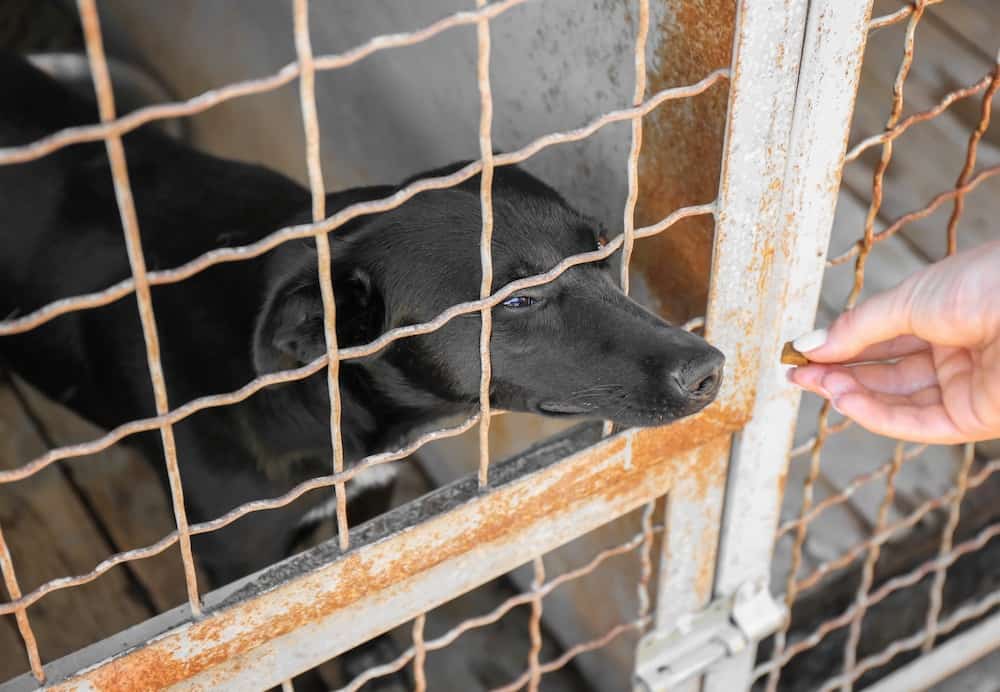
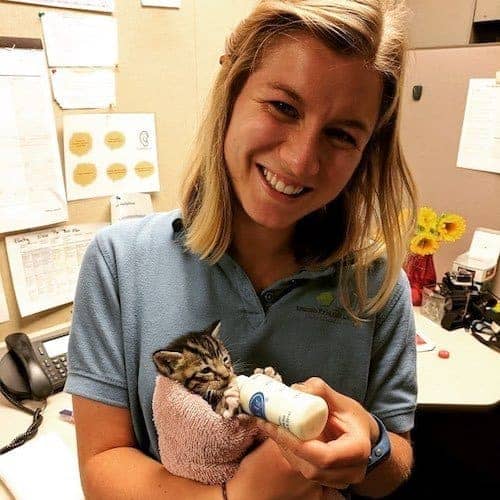
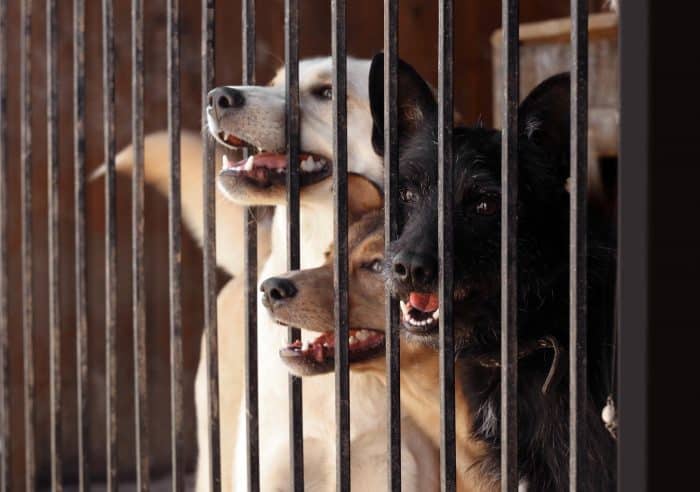

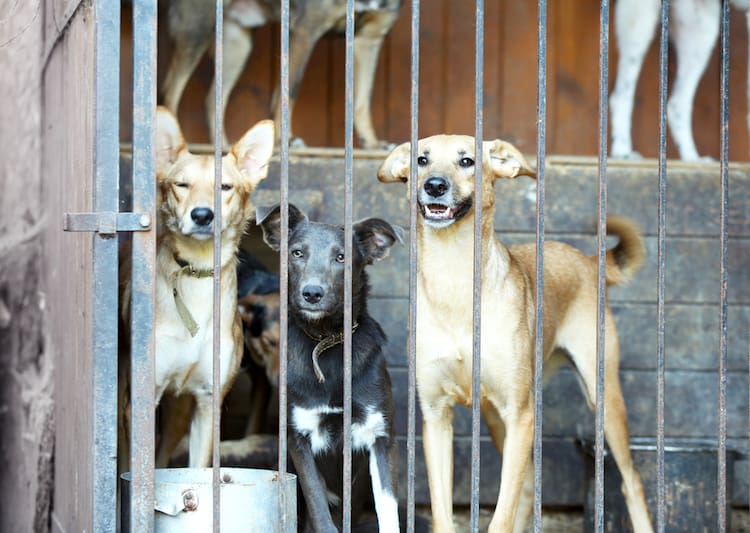
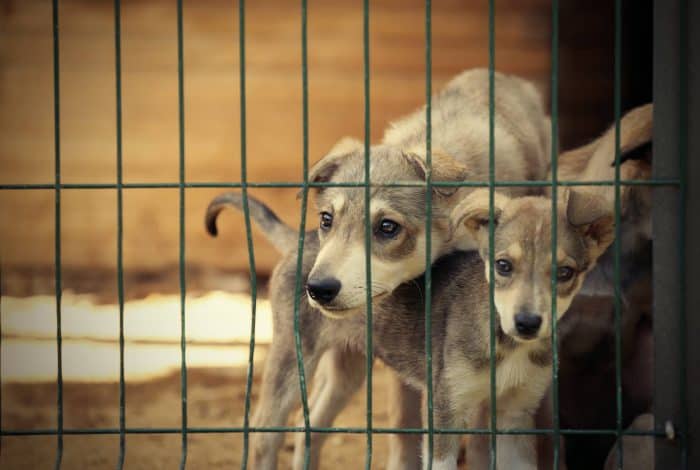
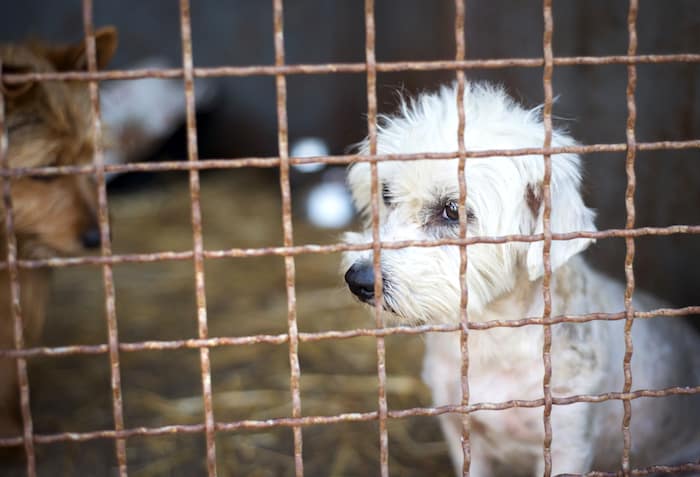
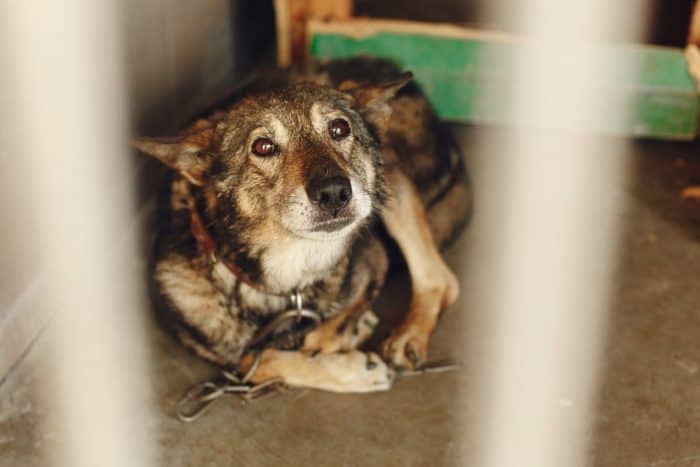


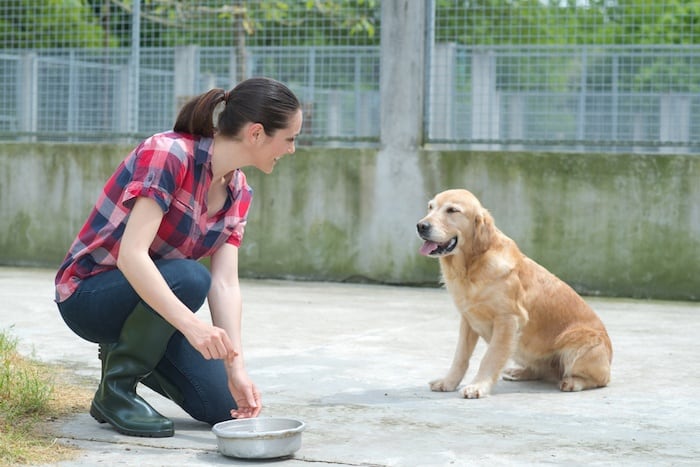

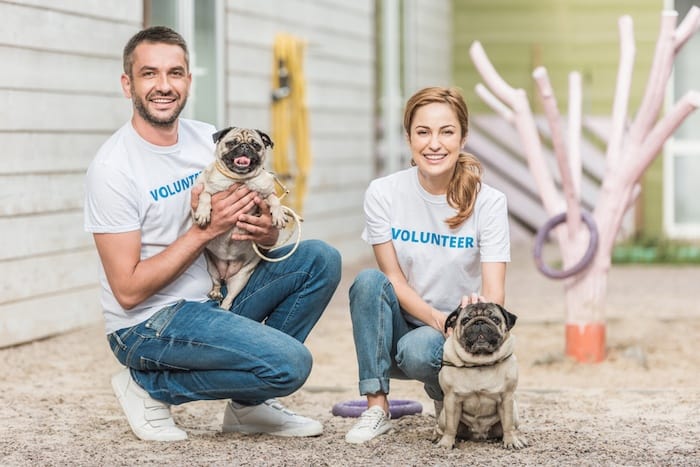



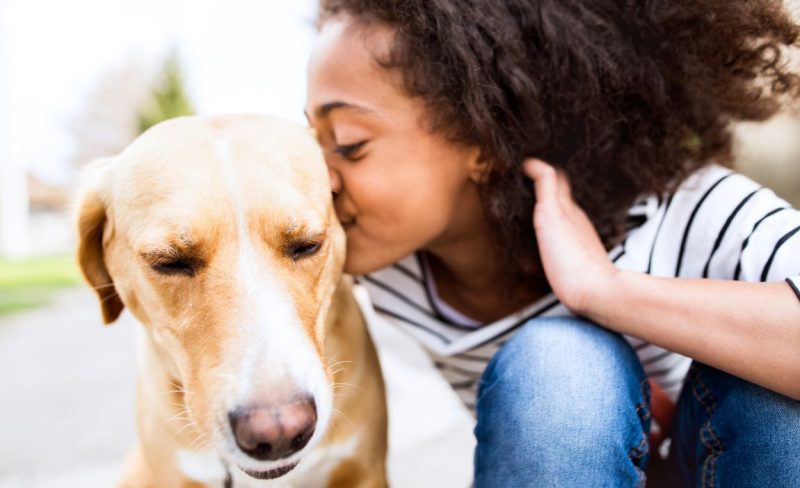
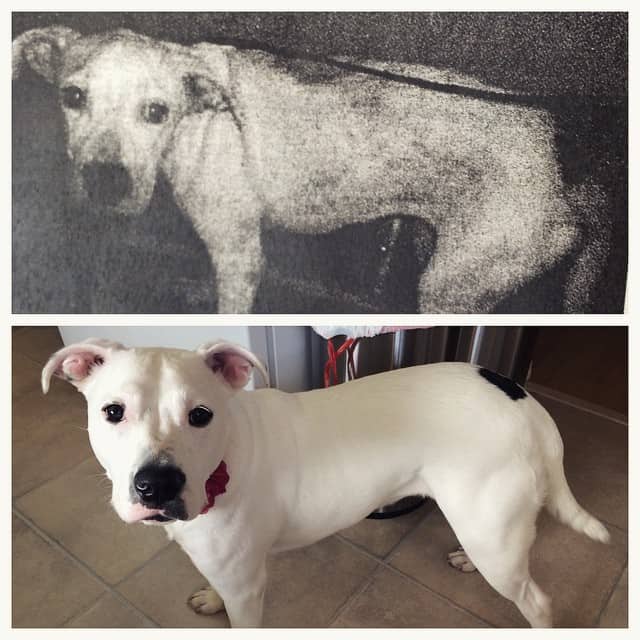


Leave a Comment